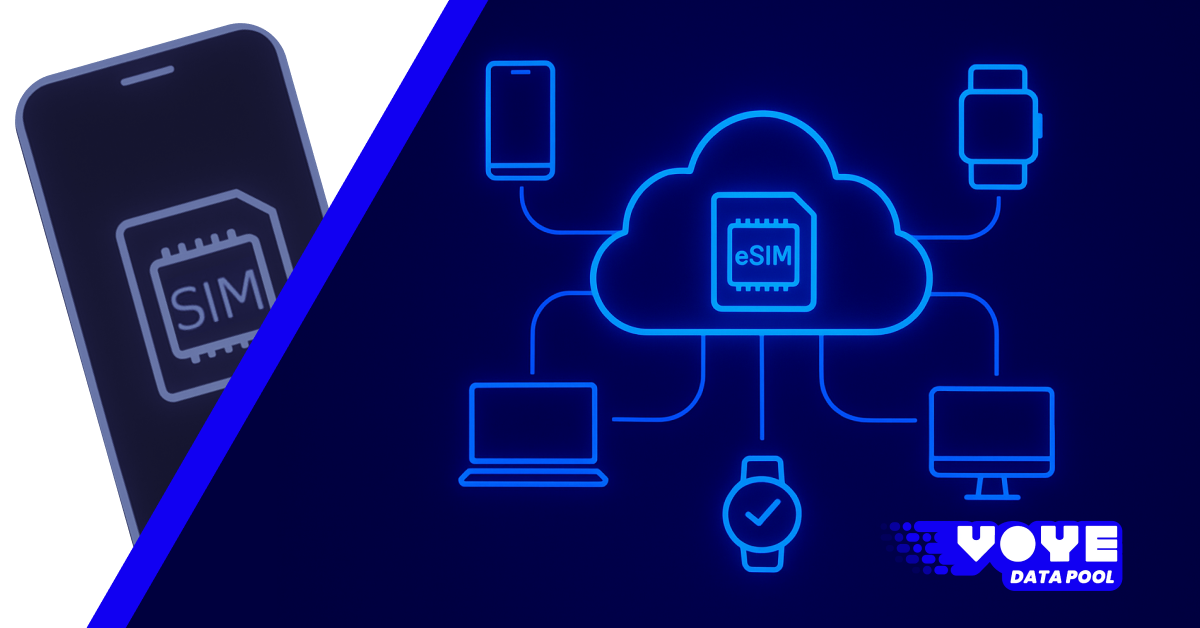Is Your Company Ready for a Pooled eSIM Plan?
Pooled eSIM plans are transforming the way companies manage global connectivity. This blog explains how shared data pools can simplify operations, cut costs, and give IT teams greater control over employee usage—helping businesses stay agile and connected in an increasingly mobile world.

In today’s fast-changing business environment, connectivity is no longer just an operational need — it’s a strategic advantage. From sales teams on international trips to distributed staff managing remote operations, companies depend on uninterrupted, cost-efficient global connectivity to thrive. Traditional roaming agreements and even individual SIM solutions have become barriers rather than enablers, driving up costs and adding administrative overhead.
This is where pooled eSIM plans enter the conversation. By consolidating mobile data into a shared pool that can be accessed across multiple employees and devices, companies gain a smarter, more cost-effective way to stay connected worldwide. But here’s the critical question: is your company ready for a pooled eSIM plan?
Below, we’ll dive deep into what pooled eSIMs are, how they work, their business benefits, potential challenges, and the indicators that show your enterprise is ready to make the transition.
Understanding the Shift : What Is a Pooled eSIM Plan?
An eSIM (embedded SIM) is a digital SIM embedded directly into devices such as smartphones, tablets, laptops, and IoT hardware. Unlike physical SIM cards, eSIMs can be remotely provisioned, allowing employees to switch networks, activate plans, or update profiles instantly without handling tiny plastic cards.
A pooled eSIM plan takes this a step further by centralizing mobile data into one shared pool. Instead of assigning each employee their own capped data plan, businesses allocate one data allowance that all employees draw from. This approach resembles enterprise software licensing or cloud storage models — scalable, centralized, and adaptable.
For example :
- A team of 50 employees traveling across different regions may collectively use 500 GB of data in a month. Instead of assigning each employee a rigid 10 GB plan, the company manages one 500 GB pool, where light users and heavy users naturally balance each other out.
This model maximizes efficiency and removes the “overage/underuse” problem plaguing traditional telecom contracts.
Why Enterprises Are Looking Beyond Individual SIMs
The limitations of legacy connectivity are evident. Businesses managing distributed teams are grappling with :
- Excessive roaming costs : Employees traveling internationally often return with shockingly high bills.
- Underutilized plans : Some employees barely use data while others exhaust their limits, creating imbalance and inefficiency.
- Operational complexity : Sourcing, shipping, and tracking physical SIMs across multiple countries adds logistical strain.
- Security concerns: Physical SIMs are prone to loss or misuse, and decentralized connectivity complicates monitoring.
As enterprises move toward hybrid work models, cross-border operations, and IoT deployments, the need for a centralized, flexible, and secure connectivity platform becomes urgent. Pooled eSIM plans provide that foundation.
Business Benefits of Pooled eSIM Plans
1. Cost Efficiency at Scale
By eliminating wasted allowances and unpredictable roaming bills, pooled eSIMs dramatically lower connectivity expenses. Heavy users benefit from the collective pool without the business being penalized by arbitrary limits.
2. Centralized Management
IT and operations teams can activate, monitor, and deactivate employee eSIMs from a single secure dashboard. This gives enterprises unprecedented visibility into usage trends, cost allocation, and potential misuse.
3. Global Reach
With pooled eSIM platforms, businesses tap into local carrier networks across 130+ countries without negotiating multiple contracts. Employees step off the plane and connect instantly.
4. Employee Productivity
Employees don’t waste time searching for local SIM cards, dealing with physical swaps, or troubleshooting roaming. Their devices are ready-to-use, enabling them to focus on work from day one.
5. Enhanced Security and Compliance
Pooled eSIMs allow businesses to enforce company-wide policies. Lost or stolen devices can be instantly disconnected from the pool, minimizing risks. The centralization also supports compliance audits.
Challenges and Considerations
Transitioning to pooled eSIM connectivity isn’t without hurdles. Companies must weigh :
- Device compatibility : Not all devices support eSIM technology. Legacy devices may require upgrades.
- Vendor reliability : Choosing a provider with strong global carrier relationships and 24/7 support is crucial.
- Policy alignment : Companies need to establish internal rules for fair use to prevent a few employees from draining resources.
- Integration needs : Some businesses may need the platform to integrate with existing expense management or ERP tools.
Addressing these considerations upfront ensures a smooth adoption curve.
Signs Your Company Is Ready for a Pooled eSIM Plan
1. Frequent International Travel
If your workforce regularly crosses borders — sales, consulting, logistics, or project teams — you’re an ideal candidate. The ability to switch instantly between networks eliminates roaming stress.
2. Distributed or Remote Workforce
Organizations with employees across continents benefit from centralized connectivity, reducing IT strain.
3. High Roaming Bills and Data Waste
If your monthly telecom invoices swing unpredictably or reveal wasted allowances, pooled eSIMs offer financial control.
4. IoT Deployments
From connected delivery trucks to smart field equipment, pooled plans make IoT scaling seamless by managing hundreds or thousands of devices from one hub.
5. Desire for Simplicity and Transparency
Companies tired of dealing with opaque telecom contracts, physical SIM logistics, and fragmented reporting will find pooled eSIMs transformative.
The Strategic Advantage of Adopting Early
Just like cloud computing adoption, businesses that pivot to pooled eSIMs early will enjoy competitive advantages. They’ll cut costs, operate with greater agility, and set up robust infrastructure for global expansion.
Meanwhile, late adopters risk being locked into rigid telecom agreements while competitors move faster, spend less, and operate with smarter oversight.
Practical Steps Toward Adoption
1. Audit Your Current Connectivity Costs
Review monthly roaming bills, underutilized data, and administrative expenses tied to telecom.
2. Evaluate Workforce Needs
Segment teams by travel frequency, remote status, or IoT requirements. Identify where pooling makes the biggest impact.
3. Check Device Readiness
Confirm which employee devices are eSIM compatible. Begin upgrade planning for those that aren’t.
4. Select the Right Provider
Prioritize platforms offering :
- Global coverage in 130+ countries
- Centralized dashboard management
- Real-time monitoring and alerts
- Enterprise-grade security and compliance tools
5. Pilot the Plan
Start with a specific department or travel-heavy team. Measure cost savings, productivity, and IT efficiency before scaling enterprise-wide.
About the Brand : Enterprise eSIM Connectivity, Simplified
At Voye Global, we help enterprises keep employees connected across the world — without costly roaming fees.
- Instant activation : Provision eSIMs remotely in minutes.
- Centralized management : Monitor and control global data usage from one secure platform.
- Cost savings : Pay for one pooled plan, not dozens of individual ones.
- Global coverage : Access reliable networks in over 130 countries.
With Voye Global, companies gain the flexibility, security, and transparency needed to scale confidently in a connected world.
Final Thoughts
The question is no longer whether enterprises need smarter global connectivity — it’s whether they’re ready to embrace it. A pooled eSIM plan offers a path toward cost efficiency, centralized control, and global flexibility that legacy telecom solutions simply can’t match.
If your business is struggling with unpredictable roaming bills, juggling SIM logistics, or scaling a remote workforce, now is the time to make the shift. The companies that act early will secure an operational edge — one where connectivity fuels growth instead of constraining it.



 6 min read
6 min read





